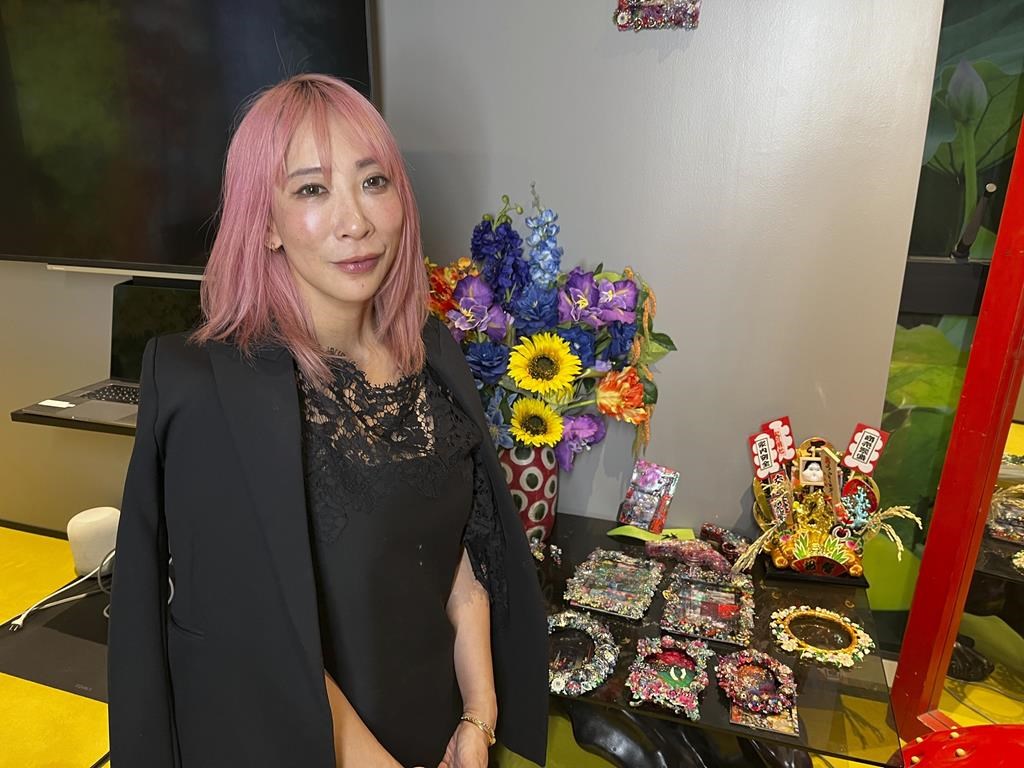Entertainment
With ‘Eternity in a Moment,’ Japanese artist Mika Ninagawa portrays everyday wonders

TOKYO (AP) — Flowers blossoming like pink chiffon, luscious berries and fluttering goldfish make for the delicate but defiant beauty that’s signature Mika Ninagawa.
With “Eternity in a Moment,” the Japanese photographer and filmmaker has created an immersive installation where a visitor walks through rooms with various motifs. One is filled with flowers sprouting everywhere like a Garden of Eden gone berserk.
Other rooms have circles of light popping up in darkness, or rows of fluffy cushions where people take in imagery projected on the ceiling. It’s a whimsical bombardment of the senses.
“With the world going through all these momentous changes, we’ve experienced how humble, yet precious, even miraculous, this reality is in the everyday, so fragile like sand escaping through our fingers,” Ninagawa told The Associated Press at her home office in Tokyo.
“We feel we want to treasure this beauty. We feel we want to preserve this moment.”
Her exhibition, which toured various museums last year, is now at the Tokyo Node exhibition space in Toranomon Hills Station Tower through Feb. 25.
The daughter of Yukio Ninagawa, the renowned theater director behind innovative productions of Shakespeare and Greek tragedies, Ninagawa started out as a photographer.
She is credited as an originator of the 1990s “girlie photo” movement, in which young women took snapshots of whatever struck their fancy. Then she went through a period of anger, rebelling against a male-dominated society in Japan that she felt oppressed women and reduced them to commodities.
Her father’s death seven years ago changed her again, she recalled.
“I started seeing the world through the perspective of someone who was about to leave this world, when you notice all the dazzling moments in the everyday, even simple things like light shining through a convenience store,” Ninagawa said.
“With that perspective, I was able to capture with a deeper and clearer resolution what tends to get buried in your usual existence: how truly wondrous this world is.”
Her house is filled with sparkling gems, posters by graphic designer Tadanori Yokoo and a giant strawberry-shaped sculpture. It’s almost like a museum to her vision.
Ninagawa’s work has explored the cruelty and evil that lurk behind beauty, the way light and darkness are inseparable, and how a flower withers yet later can sprout new buds.
She made her feature film debut in 2007 with “Sakuran,” based on a manga, or Japanese comic, about the adventures of a rebellious Edo-period prostitute, decked out in gorgeous kimono and head ornaments.
She has several other films to her credit, including the 2012 “Helter Skelter,” which depicts womanhood in modern Japan as ruled by empty consumerism and zealous beauty standards. “Followers,” featuring the tribulations of urban life, first aired in 2020, marking her Netflix series debut. She is now working on several film projects.
A theme she has grappled with lately is the cyclical connection of birth and death. She had her second child around the same time her father was dying. There was overlap, even in the mundane, as in how both couldn’t eat solid food, or how they couldn’t turn over in bed, she said.
Her father was her main caretaker for the first five years of her childhood, while her mother, an actress, was more successful in earning a living than Yukio Ninagawa was at the time.
In a view extremely progressive for Japan in those days, her father taught Mika to be independent, economically and emotionally.
She has never forgotten how her father used to say that, if there were two paths, one drawing a crowd and another less traveled, never be afraid to go your own way.
“Whenever I create something, I still know being different is OK. That’s what I was taught. That thinking is seeped through my body,” she said.
___
Yuri Kageyama is on X: https://twitter.com/yurikageyama
Yuri Kageyama, The Associated Press
